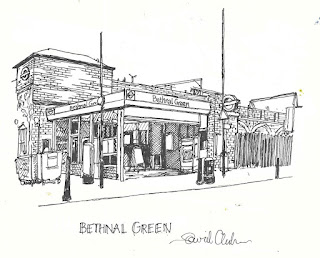During the first lockdown in 2020 one of the ways I amused
myself and kept my hand in was by making a series of detailed ink sketches of
beautiful Britain. Of necessity these were all based on photographs. I made 32
altogether, mostly just ink sketches, although I did apply watercolour to a
few. Of the 32, only about 5 depicted places I’d never been to before. Of all
of them, I reckoned that Coventry Cathedral was the most appropriate for a day
trip. I’ve already stayed in Edinburgh and then London this school holiday, but
a couple of days ago the time was right, and so I went.

Which is not quite the only reason why I made the trip on
Tuesday. Not long after we first connected to the internet 20 and some years
ago, I did a lot of research into my family history. My mum’s father’s mother
was a Rainbow from Coventry. The Rainbows were, I believe, originally Huguenot
silk weavers who originally settled in Spitalfields, then moved to the
Midlands, and in the later 18th and the first half of the 19th
century they were movers and shakers in the silk industry in Coventry, living
in Foleshill. Then, in June of this year, the BBC showed a very good
documentary called “Coventry Cathedral: Building for a New Britain”. After I’d
watched this, a visit to the cathedral went from being a possibility to a
certainty.
Getting older is certainly to my mind preferable to the
alternative, Still, one of the things that you have to guard against as you get
older is becoming more inflexible and less ready to take on board different
ideas and opinions from those you’ve held for a long time. 25 years ago I had
no time for anything built after the First World War, which come to think of it
was a ridiculous attitude anyway. Particularly as I started looking more
closely at London Underground stations I came to appreciate futurism, modernism
and art deco in architecture. Now, I’m starting to take a more open minded look
at post war architecture. Okay, I somehow doubt that I’m ever likely to become
a believer in the virtues of brutalism, but what the hell. Although Coventry
Cathedral wasn’t consecrated until 1962, it really is a child of the 50s, born
in the same time as the Festival of Britain. In fact Basil Spence, who won the
competition to design the new cathedral which was launched in 1950, also
designed a pavilion for the Festival of Britain.
It's quite possible that Coventry Cathedral might have ended
up very different from today’s cathedral. The decision to rebuild the cathedral
was taken very quickly, and the eminent Sir Giles Gilbert Scott was
commissioned. His design, produced in c.1945, was very radical in terms of the
interior, and probably not radical enough in terms of the exterior. The designs
exhibited in the Royal Academy Exhibition certainly made it look a heavy and
gloomy , sort of cleaned down and slightly streamlined gothic. Allegedly the
bishop wasn’t happy, wanting a more modern looking building which would have a
better chance of appealing to younger people. I have to be honest, looking at
what we have now I can’t say that I think he was wrong.

Entering the cathedral I was struck by a number of things.
Firstly, it’ a huge empty space, but on the other hand everywhere you look
around the walls there are impressive works of art. I personally really like the
massive glass screen with John Hutton’s engraved figures of saints and angels
on each glass panel. I think that the figures are incredibly evocative, with
their elongated necks and limbs, and their clothing resembling death shrouds,
their strange, tormented, almost alien features. They’re not comfortable to
look at, but my goodness, they’re effective. They’re also a hell of a contrast
with Graham Sutherland’s gigantic Christ In Majesty tapestry, and also the
panels of stained glass windows on either side. I’m not religious – not boasting,
not apologising, just stating a fact – but if I lived close to the cathedral I
could see myself often nipping in to spend a little time in quiet reflection –
it really is that kind of space.
I like the clever way that the walls are built out in zigzagging
ribs – stop me if I’m getting too technical here, and that they are broken up further
by the stained glass panels. However, for me the real star turn on the exterior
is the statue of St. Michael’s Victory over the Devil. It was one of the very
last works created by Sir Jacob Epstein.I’ll be honest, I don’t unconditionally
love every sculpture or statue that Sir Jacob produced. . . but I think that
this one is fantastic. Hence the sketch. I did read that the devil’s head was
allegedly partly based on Epstein himself, who had practiced expressions in a
mirror. The head of the Devil is supposed to be modelled on his daughter’s two
husbands – her first husband the artist Lucien Freud, and her second husband
the economist Wynne Godley. It looks more like Godley than Freud but has
resemblance to both of them in my opinion.















































